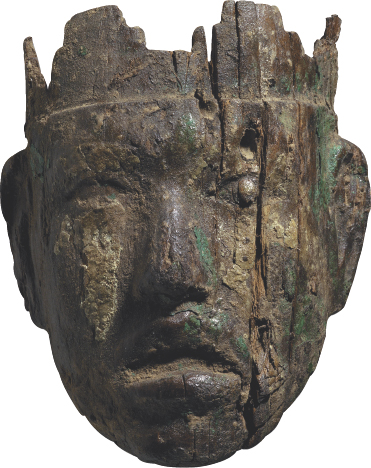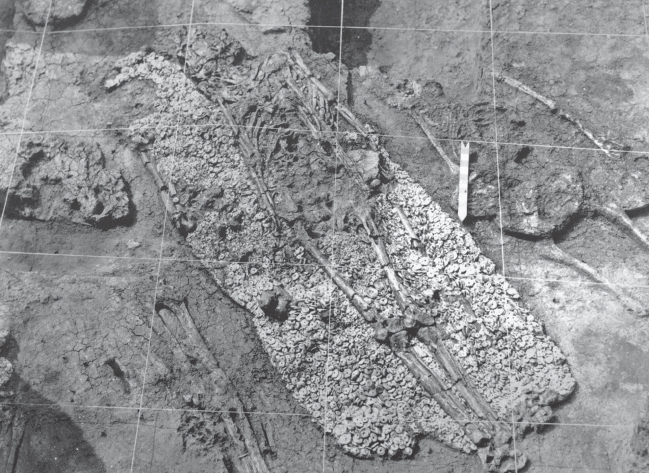
Printed Page 2 Chapter Chronology
Ancient America, Before 1492

Quickly learn what is important in this chapter by doing the following:
- READ the Chapter Outline to see how the chapter is organized.
- SKIM the Chronology to see what will be covered.
When you are ready, download the Guided Reading Exercise, then read the chapter and the Essential Questions for each section and complete the Guided Reading Exercise as you go. Then use LearningCurve and the Chapter Review to check what you know.
Nobody today knows his name. But almost a thousand years ago, more than four hundred years before Europeans arrived in the Western Hemisphere, many ancient Americans celebrated this man—let's call him Sun Falcon. They buried Sun Falcon during elaborate rituals at Cahokia, the largest residential and ceremonial site in ancient North America, the giant landmass north of present-day Mexico. Located near the eastern shore of the Mississippi River in what is now southwestern Illinois, Cahokia stood at the spiritual and political center of the world of more than 20,000 ancient Americans who lived there and nearby. The way Cahokians buried Sun Falcon suggests that he was a very important person who represented spiritual and political authority.
What we know about Sun Falcon and the Cahokians who buried him has been discovered by archaeologists—scientists who study artifacts, material objects left behind by ancient peoples. Cahokia attracted the attention of archaeologists because of the hundreds of earthen mounds that ancient Americans built in the region. The largest surviving mound, Monks Mound, is a huge pyramid that covers sixteen acres, making it the biggest single structure ever built by ancient North Americans.

Atop Monks Mound, political and religious leaders performed ceremonies watched by thousands of Cahokians who stood on a fifty-acre plaza at the base of the mound. Their ceremonies were probably designed to demonstrate to onlookers the leaders' access to supernatural forces. At the far edge of the plaza, Cahokians buried Sun Falcon in an oblong mound about 6 feet high and 250 feet long.
Before Cahokians lowered Sun Falcon into his grave sometime around AD 1050, they first placed the body of another man facedown in the dirt. On top of that man, Cahokians draped a large cape made of twenty thousand shell beads crafted into the likeness of a bird. They then put Sun Falcon faceup on the beaded cape with his head pointing southeast, aligned with the passage of the sun across the sky during the summer solstice. Experts speculate that Cahokians who buried Sun Falcon sought to pay homage not only to him but also to the awe-inspiring forces of darkness and light, of earth and sun, that governed their lives.
To accompany Sun Falcon, Cahokians also buried hundreds of exquisitely crafted artifacts and the bodies of seven other adults who probably were relatives or servants of Sun Falcon. Not far away, archaeologists discovered several astonishing mass graves. One contained 53 women, all but one between the ages of fifteen and twenty-five, who had been sacrificed by poison, strangulation, or having their throats slit. Other graves contained more than eighty sacrificed men and women half of whom had been executed at the burial site. In all, more than 270 people were buried in the mound with Sun Falcon.
Nobody knows exactly who Sun Falcon was or why Cahokians buried him as they did. To date, archaeologists have found no similar burial site in ancient North America. Most likely, Sun Falcon's burial and the human sacrifices that accompanied it were major public rituals that communicated to the many onlookers the fearsome power he wielded, the respect he commanded, and the authority his survivors intended to honor and maintain. Much remains unknown and unknowable about him and his fellow Cahokians, just as it does with other ancient Americans. The history of ancient Americans is therefore necessarily incomplete and controversial. Still, archaeologists have learned enough to understand where ancient Americans came from and many basic features of the complex cultures they created and passed along to their descendants, who dominated the history of America until 1492.